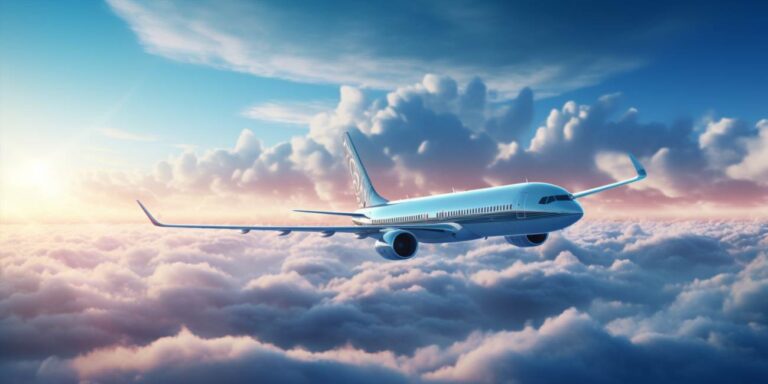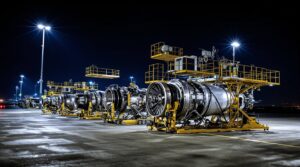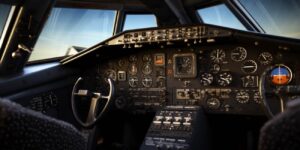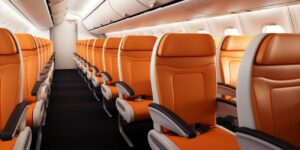During this phase, the aircraft is neither ascending nor descending, maintaining a stable and efficient altitude. The cruise speed is the optimal velocity at which the aircraft can cover long distances while minimizing fuel consumption. It represents a delicate equilibrium between aerodynamic efficiency and engine performance.
In the realm of aviation, cruise speed is a dynamic parameter influenced by several factors. Aircraft designers meticulously consider the balance between drag and thrust to determine the most fuel-efficient cruise speed for a particular aircraft model. This sweet spot ensures that the plane can cover vast distances without compromising fuel efficiency or stressing the engines.
The cruise speed is notably distinct from takeoff and landing speeds, where the aircraft experiences heightened drag and must exert additional power. In contrast, during cruise, the airplane operates in a more streamlined manner, with the primary objective of covering distance efficiently.
Various types of aircraft have different cruise speeds based on their design and intended purpose. Commercial airliners, for instance, typically have higher cruise speeds compared to smaller general aviation planes. This divergence arises from the distinct requirements of passenger transportation versus personal and recreational flying.
The significance of cruise speed extends beyond mere velocity; it embodies the essence of long-haul flight efficiency. Pilots meticulously calculate the optimal cruise speed for each journey, factoring in wind conditions, altitude, and the specific capabilities of the aircraft.
As an aircraft settles into its cruise speed, it enters a phase of relative tranquility, with passengers experiencing a smoother ride compared to the dynamic climb and descent phases. This phase showcases the culmination of aerodynamic design, engine performance, and operational efficiency.
Summing up, the cruise speed of aircraft is a pivotal aspect of aviation that epitomizes the delicate balance between performance and efficiency. It is not merely a numerical value but a manifestation of meticulous engineering and operational considerations, ensuring that airplanes traverse the skies with optimal speed and fuel economy.
Optimal cruise speed depending on aircraft weight and altitude
When it comes to determining the optimal cruise speed for an aircraft, various factors come into play, with the aircraft’s weight and the altitude being crucial elements. Achieving the perfect balance ensures fuel efficiency, safety, and optimal performance throughout the journey.
At different weights and altitudes, aircraft experience varying levels of aerodynamic forces. These forces significantly impact the drag and thrust requirements, directly influencing the most fuel-efficient cruise speed. To better understand this relationship, it’s essential to delve into the intricacies of aerodynamics.
The term drag refers to the resistance an aircraft encounters as it moves through the air. As weight increases, so does drag. The higher the altitude, the thinner the air, reducing drag but also affecting the engines’ efficiency. Conversely, at lower altitudes, air density is higher, resulting in increased drag.
The thrust produced by the engines opposes drag and propels the aircraft forward. Achieving an equilibrium between drag and thrust is vital for fuel efficiency. Aircraft manufacturers conduct extensive testing to determine the optimal cruise speed for different weights and altitudes, considering the balance between drag, thrust, and fuel consumption.
When we examine the relationship between weight and cruise speed, it becomes apparent that lighter aircraft generally require less thrust to overcome drag, leading to increased fuel efficiency. However, at higher altitudes, where air density is lower, engines may need to work harder to maintain the desired speed. This is where the intricate dance between weight and altitude influences the optimal cruise speed.
Utilizing a table to illustrate the correlation between weight, altitude, and optimal cruise speed can provide a clearer picture:
| Weight | Altitude | Optimal Cruise Speed |
|---|---|---|
| Light | Low | Higher |
| Heavy | High | Lower |
This simplistic table highlights the general trend – lighter aircraft at lower altitudes tend to operate at higher speeds for optimal efficiency, while heavier aircraft at higher altitudes may find lower speeds more economical.
Cruise speed impact on aircraft fuel efficiency and flight range
When delving into the intricate dynamics of aircraft performance, the cruise speed emerges as a pivotal factor with a profound impact on fuel efficiency and flight range. The delicate balance between these elements shapes the operational capabilities of an aircraft, influencing not only the cost-effectiveness of travel but also the environmental footprint of aviation.
At its essence, cruise speed refers to the sustained velocity at which an aircraft operates during its main phase of flight. Striking the right chord in terms of efficiency is a multifaceted challenge for aviation engineers. The selection of an optimal cruise speed involves a meticulous trade-off between several critical factors, with fuel efficiency sitting squarely at the forefront.
Understanding the intricate relationship between cruise speed and fuel efficiency requires a nuanced exploration of aerodynamics. At higher speeds, aircraft encounter increased drag, the aerodynamic force opposing forward motion. This elevated drag necessitates higher fuel consumption, thereby diminishing the overall efficiency of the flight. Conversely, a moderate cruise speed allows for a more favorable balance, enabling the aircraft to cover longer distances with optimal fuel utilization.
The impact of cruise speed on flight range is unmistakable. The choice of an appropriate speed directly influences the aircraft’s ability to cover extended distances without the need for frequent refueling stops. A delicate equilibrium must be achieved to maximize range while ensuring that the fuel consumption remains within economically viable bounds.
Considered as a holistic system, the interplay between cruise speed, efficiency, flight range, and fuel consumption demands a sophisticated approach. Aviation engineers meticulously fine-tune these parameters, leveraging technological advancements to strike an optimal balance. This balance extends beyond the immediate economic considerations, encompassing environmental concerns as well.
Efforts to enhance efficiency and flight range often involve innovations in materials, propulsion systems, and aerodynamic designs. Lightweight materials reduce overall aircraft weight, contributing to improved fuel efficiency. Advanced propulsion technologies, including more fuel-efficient engines, play a crucial role in optimizing the delicate relationship between cruise speed and fuel consumption.
A visual representation of the intricate dynamics between cruise speed, efficiency, flight range, and fuel consumption can be elucidated through a concise table:
| Cruise Speed | Fuel Efficiency | Flight Range |
|---|---|---|
| Low | High | Extended |
| Moderate | Optimal | Optimal |
| High | Reduced | Limited |
As aviation continues to evolve, the quest for the perfect balance between cruise speed, efficiency, flight range, and fuel economy remains ongoing. Striking this balance not only shapes the economics of air travel but also contributes significantly to the sustainable future of aviation.
Cruise speed records of supersonic aircraft concorde and sr-71 blackbird
When it comes to supersonic travel, two iconic aircraft, the Concorde and the SR-71 Blackbird, stand out in the annals of aviation history, setting remarkable records for cruise speed.
The Concorde, a joint venture between British and French aerospace industries, was the epitome of luxury and speed. Its cruise speed was a breathtaking Mach 2.04, or approximately 1,354 miles per hour (2,180 kilometers per hour). This allowed the Concorde to traverse the Atlantic Ocean in just over three hours, revolutionizing transatlantic air travel. The records set by the Concorde for supersonic cruise speed became legendary, marking an era of unprecedented velocity and style in commercial aviation.
On the other hand, the SR-71 Blackbird, a reconnaissance aircraft developed by Lockheed Martin, was a marvel of engineering designed for covert, high-speed flights. While its official cruise speed remains classified, it is widely acknowledged that the Blackbird operated at speeds exceeding Mach 3.2. This means it could cover more than 2,200 miles per hour (3,540 kilometers per hour), surpassing the Concorde‘s already impressive supersonic capabilities.
The records set by the SR-71 Blackbird were not only about sheer speed but also about altitude. With a maximum altitude exceeding 85,000 feet (25,900 meters), the Blackbird soared above the atmosphere, evading enemy radar and solidifying its status as an aviation marvel. Its unparalleled supersonic capabilities and stealthy design allowed it to execute reconnaissance missions at an unprecedented pace, further solidifying its place in aviation history.
Comparing the records of the Concorde and the SR-71 Blackbird reveals two different facets of supersonic excellence. While the Concorde showcased the possibilities of commercial supersonic travel, the SR-71 Blackbird demonstrated the military applications of pushing the boundaries of speed and altitude. Both these aircraft etched their names in the books of aviation history with their extraordinary records, leaving an indelible mark on the world of supersonic flight.






